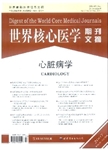儿童期基于单一SCN5A突变的3型长QT综合征和Brugada综合征的发育特征
Developmental aspects of long QT syndrome type 3 and Brugada syndrome on the basis of a single SCN5A mutation in childhood作者机构:Beatrix Children's Hospital Department of Pediatric CardiologyHanzeplein 1 9700 RB Groningen Netherlands
出 版 物:《世界核心医学期刊文摘(心脏病学分册)》 (Digest of the World Core Medical Journals(Cardiology))
年 卷 期:2005年第1卷第12期
页 面:56-56页
学科分类:1002[医学-临床医学] 100202[医学-儿科学] 10[医学]
主 题:Brugada SCN5A 童期 心电图特征 携带者 导联心电图 基因突变 外显率 心动过缓 年龄组
摘 要:OBJECTIVES: The aim was to investigate at what age electrocardiographic characteristics of long QT syndrome type 3(LQT3) and Brugada syndrome(BS), based on a single SCN5A mutation, appear. BACKGROUND: The QT interval(QT) in LQT3 is prolonged during bradycardia. It is not clear yet if this is obvious in young children with a relative fast heart rate(HR). METHODS: Thirty-six children with an SCN5A gene mutation(1795insD) and 46 non-carrier siblings were investigated. In different age groups, HR, QT, QTc, and ST segment elevation on a 12-lead electrocardiogram(ECG), and HR, QT, QTc, and ΔQT after the longest pause in a Holter(recording) were evaluated. RESULTS: In all age groups, HR at rest tended to be lower in carriers than in non-carriers, and QT was longer in carriers than in non-carriers. The Brugada phenotype was found 5 years. Gender specific differences were not identified. The QT at lower HR and ΔQT were longer in carriers than in non-carriers. A QTc of5 years. Good tools for clinical diagnosis of LQT3 in this family are QTc at the lowest HR and ΔQT after a pause in a Holter, even at very young age.



